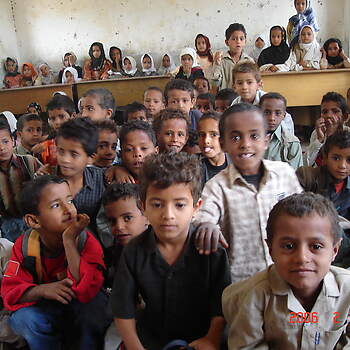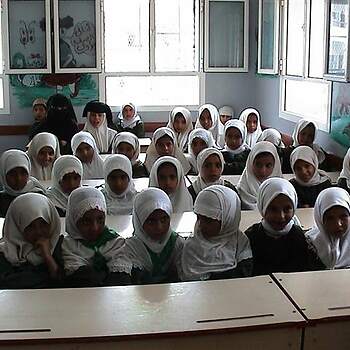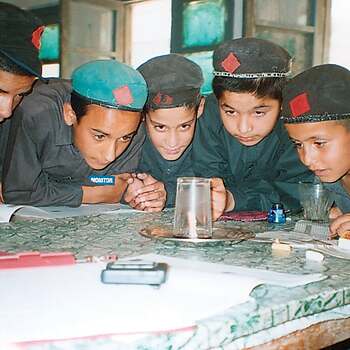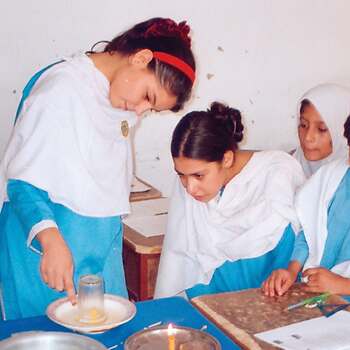Challenges for girls’ education and ways to overcome them:
1. Cost.
Costs associated with schooling are one of the main factors hindering girls’ education; parents must partially or entirely cover school fees; transportation costs; textbooks, stationery; uniforms, and school bags. In many African and Asian countries parents' preference is sending their sons to school rather than their daughters. Experience shows that if a family has a restricted budget, then boys go to school. Although this trend is sometimes reversed, when boys become older and drop out of school to earn an income to sustain or contribute to the family’s livelihood. If girls go to school, then after their first period (menstruation) there may be a tendency to let girls stay at home and prepare them for marriage. And although now more girls are going to school, yet menstruation still acts as a cutting point. The “hidden costs” in education, even free education, remain an obstacle to access to girls' education.
2. Poor Quality and Relevance of Education.
Parents may argue that the quality of education, that their children would get, is so low that –considering the household work and paid work that daughters do to support their families with– it does not make sense for them to send girls to schools; parents also argue that additional tutoring is an additional cost, which influences them in their choice of sending children to school. Teachers do not only face the challenge to improve access to education for girls, but also the utilization of education, i.e. how to retain pupils in school. Questions that should be asked are: How interesting is education, is it relevant for the lives of boys and girls? And what about the rural-urban divide? How qualified are teachers? Do teachers act as role models, are they showing boys and girls how to live with integrity, determination, and a strong passion towards achieving their full potential? Is there a good balance between male and female teachers? Do they act as role models? Parents' participation through e.g. Parent Teachers Associations, mothers and fathers councils, and parents' active contribution have significantly improved and supported, better education, access to- and less drop-out of schooling. The introduction of ICT (information and communication technology) and computer education is still lagging in, and within, many countries. With the current pandemic of COVID -19, the closing of many schools, and distance education, this has become an even greater challenge for girl students.
3. Lack of Enforcement of Compulsory Education and Late Entry into the school system.
Many countries do provide free compulsory education, but the quality of monitoring by the inspectorates of government agencies leaves room for improvement. An added challenge is the fact that girls may enter late at school and must sit in overcrowded classrooms with children of various ages.
4. Early Child Marriage.
In some countries, due to various reasons such as traditional beliefs, customs, and financial reasons, parents may decide to marry their children at a young age; these child brides generally lack education and thus are more prone to teenage pregnancy and domestic violence; child marriage is viewed as “both a consequence and a cause of girls not attending school”.
5. Unwanted teenage pregnancies
Regretfully, unwanted teenage marriages in secondary education (or the latter part of primary education) are still common, negatively affecting the future of, in particular, girls.
Unwanted teenage pregnancies are prevalent in many countries in Sub-Saharan Africa and Asia. This is partly so because of lack of information, taboos around sex and sexuality, and lack of family planning commodities. These unwanted pregnancies result in school drop-out of girls (young mothers), sometimes long-lasting psychological- and physical harm (e.g., fistula). Often teenage mothers get stigmatized for being “irresponsible”, which further aggravates their situation. There are examples of pregnant girls who were sent off from their households. In exceptional cases, like in a village in Burundi a boy, who impregnated a young girl from a well-off family, was imprisoned.
6. Menstruation
Girls may miss out on school because they start menstruating. Although menstruation has recently become a topic of interest and attention in many countries, stigma and shame are still prevalent. Access to cheap sanitary products is often lacking.
Menstruation has been a long-standing taboo in many countries. In Nepal, until recently, menstruating women were seen as “impure” by their community. Because of this belief, menstruating girls and women had to go to secluded places (a “hut” for example) to stay there until their period was over. It goes without saying that these are harmful practices by which women’s self-esteem and health has been negatively affected.
7. Household Chores
Household work such as carrying water, preparing food, and washing clothes fall disproportionately to girls and women throughout the developing world. It is the primary reason girls are kept home from school. Spreading the burden of chores across all members of the family helps girls succeed. Boys benefit more from extracurricular activities since girls must go home directly after school classes are over, help their mother, fetch water, and do household- and agricultural chores.
8. Gender-based violence, including physical, sexual abuse, harassment, and bullying, may deeply and negatively affect boys and girls. For girls, this may be an additional reason for an increase in drop-out. Traveling to and from school is at times a hazardous affair for girls. Parents seem to be less likely to let their daughters (and sons at times) travel to school if they have to travel long and unsafe distances. Potential solutions are for example traveling in groups and having one parent collecting children. Schooling should be ideally available at a distance of a maximum of 2-4 kilometers to avoid traveling too long distances between home and school.
In many countries, the road from home to school is not safe. Physical- and sexual harassment in cities for especially girls who travel by public transport and safety concerns in rural areas, e.g., in Nigeria and Kenya, may result in early drop-out of girls.
Regretfully, sometimes the classroom can be an unsafe place too. Some teachers, and even religious leaders, may harm children. Girls, who have been sexually abused by them, are no example. Parents' participation, taking girls' (and boys') opinions seriously, active leadership, and proper school management are ways to help avoid these situations.
Physical harassment is still prevailing. In one instance there were sticks in the classroom of a rural school. The teacher argued that he uses the sticks for “indicating this and that on the blackboard” while in reality they were used for hitting children (even if corporal punishment was long before outlawed). This goes back again to teachers’ education. It is essential in a teacher's education that violence in the classroom is counterproductive. It takes effort to ‘unlearn’ traditional harmful practices from the own background and upbringing of teachers.
9. Conflict and Crisis
Those girls and young women who live in crisis-affected areas (either by armed conflict or natural disasters) are more likely to miss out on school than those living in safer areas. Refugee children (m/f) and families suffer a lot. UN agencies and INGOs may offer innovative and adapted education opportunities in refugee camps.
10. Trafficking
The trafficking of children and young adults from their homes abroad continues to be a challenge, most of whom are girls. This coercion takes place in the form of sexual exploitation, forced marriage, child-selling, and forced labor. Trafficked girls and young women experience physical, sexual, and mental abuse, which can trap girls in a cycle of extreme poverty and no further education.



